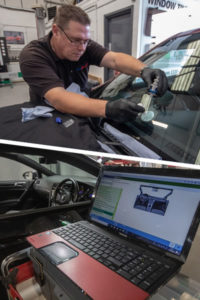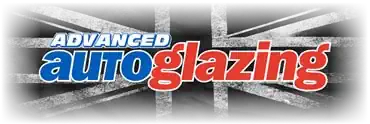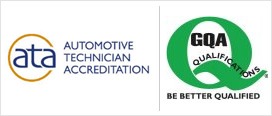
In recent years, Advanced Driver Assistance Systems (ADAS) have become increasingly common in modern vehicles. These sophisticated systems use a range of sensors, including cameras often mounted behind the windscreen, to improve driver safety and comfort. But what happens when you need to replace your windscreen? Does this affect your ADAS, and if so, what should you do about it?
Understanding ADAS
Before we address the main question, it’s crucial to understand what ADAS is and how it works. ADAS is a collective term for a variety of safety features in modern vehicles, such as:
- Lane departure warning
- Automatic emergency braking
- Adaptive cruise control
- Traffic sign recognition
- Pedestrian detection
These systems rely on sensors, including cameras typically mounted on or near the windscreen, to ‘see’ the road and make split-second decisions to assist the driver.
The Impact of Windscreen Replacement on ADAS
When you replace your windscreen, it’s not just a simple swap of glass. The new windscreen needs to be positioned exactly as the original was, down to the millimetre. Even minor deviations can affect the performance of your ADAS.
Why? Because the cameras and sensors that form part of your ADAS are calibrated based on their precise position relative to the vehicle. If this position changes, even slightly, it can throw off the entire system.
Do You Always Need to Recalibrate After Windscreen Replacement?
The short answer is: in most cases, yes. If your vehicle is equipped with ADAS, it’s generally recommended to recalibrate the system after windscreen replacement. However, the specific requirements can vary depending on the make and model of your vehicle.
Some car manufacturers state that recalibration is necessary after any windscreen replacement, while others specify certain conditions under which recalibration is required. It’s always best to consult your vehicle’s manual or speak with a qualified technician to determine the specific requirements for your car.
Types of ADAS Calibration
There are two main types of ADAS calibration:
- Static Calibration: This is performed in a workshop using specialised equipment. The vehicle needs to be perfectly level, with specific targets positioned at exact distances and angles from the car.
- Dynamic Calibration: This involves driving the vehicle under specific conditions, such as at certain speeds or on particular types of roads. The system recalibrates itself as you drive.
Some vehicles require only one type of calibration, while others may need both. Again, this depends on the make and model of your vehicle.
Comparison: Calibration vs. No Calibration
Let’s look at the potential outcomes of calibrating versus not calibrating after windscreen replacement:
| Aspect | With Calibration | Without Calibration |
| ADAS Performance | Functions as intended | May be compromised |
| Safety | Maintained at original level | Potentially reduced |
| Insurance Compliance | Fully compliant | May affect claims |
| Legal Considerations | Meets regulations | Potential legal issues |
| Long-term Cost | Initial cost, but prevents future issues | Potentially higher due to undetected issues |
As you can see, while calibration may involve an initial cost, it’s crucial for maintaining the safety features and overall performance of your vehicle.
FAQs About ADAS Recalibration
Here are some common questions about ADAS recalibration:
How long does ADAS recalibration take?
The process typically takes between 1-3 hours, depending on the vehicle and the type of calibration required.
How much does ADAS recalibration cost?
Costs can vary widely depending on the vehicle and the complexity of the system. It’s best to get a quote from a qualified technician.
Can I drive my car before getting the ADAS recalibrated?
While it may be possible to drive your car, it’s not recommended. Your ADAS may not function correctly, which could compromise your safety.
Will my insurance cover ADAS recalibration?
This depends on your specific policy. Some insurers cover it as part of windscreen replacement, while others may not. It’s best to check with your insurance provider.
What happens if I don’t recalibrate my ADAS?
Your ADAS may not function correctly, which could lead to false alerts, failure to detect potential hazards or incorrect operation of safety features. This could potentially lead to accidents.
The Importance of Professional Calibration
While the necessity of ADAS recalibration is clear, it’s equally important to stress that this isn’t a DIY job. ADAS calibration requires specialised equipment and expertise. Attempting to calibrate the system yourself or skipping the calibration altogether could lead to serious safety issues.
Professional calibration ensures that your ADAS is functioning exactly as it should, providing you with the safety features you rely on. Moreover, proper calibration helps maintain your vehicle’s value and could be crucial in insurance matters following an accident.
Please contact the Advanced Autoglazing team for a quote at 01206 50 49 50 if you require windscreen replacement and ADAS recalibration. With our expertise in modern vehicle systems, we can ensure your windscreen is replaced correctly and your ADAS is properly calibrated, keeping you safe on the road.




